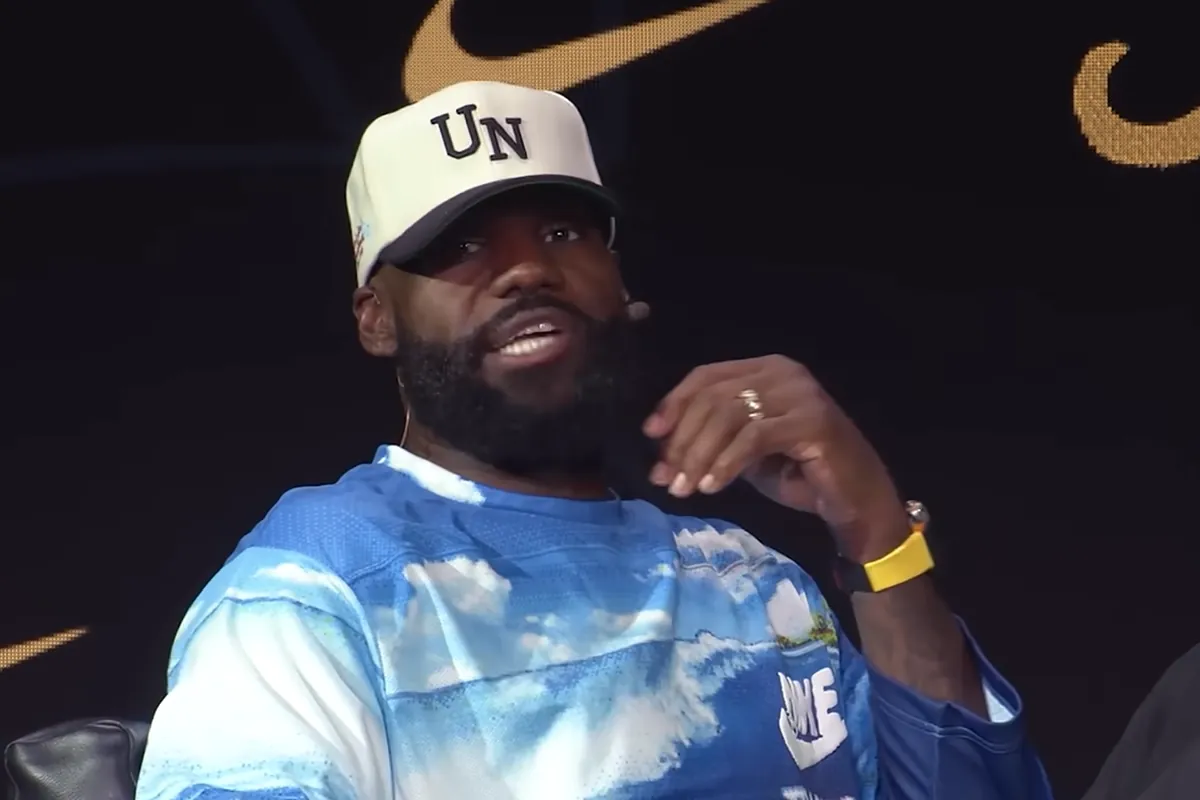

LeBron James, the Los Angeles Lakers star and one of the NBA’s most respected voices, recently closed out his Mind the Game podcast season alongside former NBA MVP Steve Nash with a powerful message.
Nash’s argument was that the modern NBA is no longer about assembling superstars. It’s about building deep, resilient teams filled with energy and toughness from top to bottom.
LeBron James uses Zhuri James as bait after hinting he might be leaving the Lakers
Recorded at Fanatics Fest in New York and released on July 15, the episode featured James reflecting on how the game has evolved during his 20-year career.
He contrasted today’s winning model with the “Big Three” era he once helped define during his Miami Heat years with Dwyane Wade and Chris Bosh.
“I played in the Big Three era,” James said, “but now the game is shifting to depth and energy. Who can step up when it matters?”
From star power to supporting cast strength
James pointed to this year’s NBA Finals – featuring the Oklahoma City Thunder and Indiana Pacers – as proof that overlooked, complementary players are now franchise cornerstones.
Names like Aaron Nesmith, Obi Toppin, Isaiah Hartenstein, and Alex Caruso came up repeatedly. All had previously been undervalued but shined when given consistent roles and a strong culture.
“These are guys who didn’t get a full opportunity elsewhere,” James said. “But in the right system, they become the spark that keeps the team going.”
This marks a significant shift from the era when championships were often decided by superstar trios. Back then, depth mattered less because three elite players could dominate the floor.
Today, with the NBA’s faster pace, more frequent injuries, and complex rotations, teams need reliable talent across all positions.
Thunder and Pacers make it clear
The 2025 NBA Playoffs made that obvious. Bench players like Caruso and Hartenstein delivered strong defensive stints and energy plays that turned games around. Nesmith and Toppin provided scoring bursts and hustle in critical moments, often filling in while stars rested or recovered.
Modern analytics support this shift. Studies show that teams with deeper rotations and strong bench efficiency maintain higher performance late in games and remain more durable across the season. In fact, data-backed franchises investing in well-rounded rosters – not just superstar payroll-are finding more consistent success.
James believes this isn’t just a trend, but the future. Winning teams are no longer built on three stars alone. They’re defined by their ability to withstand adversity, maintain energy, and rely on any player to deliver in the clutch.
As James put it: “This is what builds winning franchises.”
This news was originally published on this post .








Be the first to leave a comment